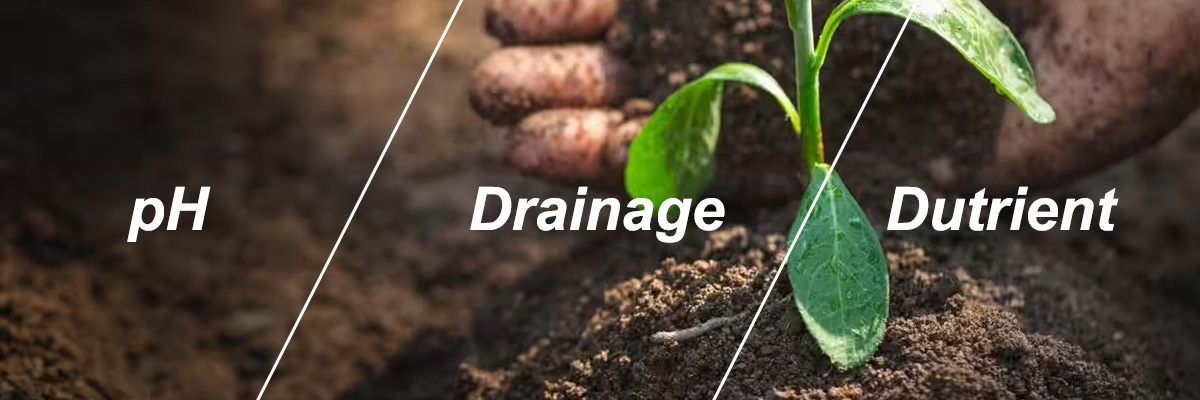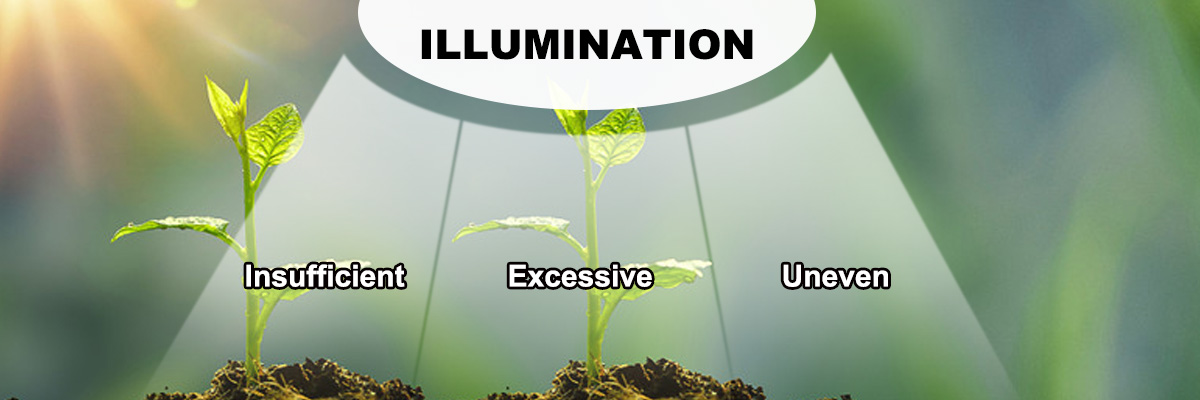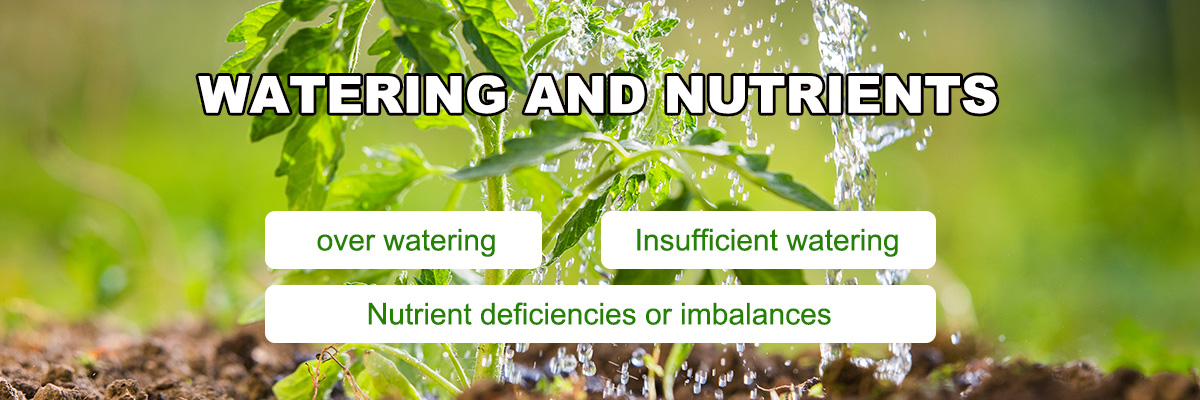Growing plants brings joy to many people. It's rewarding to see seeds sprout in warm soil, seedlings grow, and leaves spread out toward the sun. However, sometimes you may notice your plants growing slowly or even stagnating despite your passion and effort, which can be frustrating.
Often, the problem isn't a lack of dedication but rather overlooked details like soil, light, and watering. Let’s uncover these three common issues and offer practical solutions.
Soil Issues

Soil is the foundation of plant growth, and different plants have varying requirements for soil pH, drainage, and nutrients. If soil conditions don’t meet your plant’s needs, its roots will struggle to absorb nutrients, leading to slow or stalled growth. Here are some common soil problems affecting plant growth:
Incorrect pH Levels:
Soil pH directly influences how plants absorb nutrients. Most plants thrive in a slightly acidic to neutral range, but each plant has different optimal pH levels. For instance, acid-loving plants like azaleas and blueberries grow better in acidic soil, while vegetables and turf generally prefer neutral or slightly alkaline soil.
If the pH falls outside the ideal range, nutrient absorption becomes difficult, leading to stunted growth or yellowing leaves.
Poor Drainage:
Soil drainage determines if excess water can be quickly removed to prevent prolonged root submersion. Heavy clay soils with poor drainage often result in waterlogged roots, leading to oxygen deprivation, root rot, or disease.
On the other hand, sandy soils with excessively fast drainage can’t retain water, often leaving plants dry and stunted.
Nutrient Deficiency or Excess:
Nutrients in the soil are essential for healthy plant growth. A lack of nutrients can cause poor growth and yellowing leaves, while over-fertilization can lead to “fertilizer burn,” damaging roots and causing leaf browning or falling. Balanced nitrogen, phosphorus, and potassium (NPK) levels are crucial for healthy growth.
How to solve soil problems?
Adjust pH:
Use pH test strips or a device to check the soil’s acidity. If it’s too acidic or too alkaline, neutralize it by adding lime or aluminum sulfate as needed.
Improve Drainage:
For heavy clay soil with poor drainage, mix in sand or perlite to increase drainage and aeration. For sandy soil with low water retention, add humus or compost to improve moisture retention.
Nutrient Balance:
Regularly apply a balanced amount of organic fertilizer or compost to maintain a nutrient equilibrium. Adjust the fertilizer type and application frequency according to different plants’ needs.
Light Issues

Light is essential for photosynthesis, providing the energy plants need to grow and develop. Each plant has unique light requirements; some need full sunlight, while others thrive in shade. Inadequate or excessive light can impair plant growth. Let’s examine some common light problems that may slow down your plants’ growth:
Insufficient Light:
Indoor plants often suffer from insufficient light due to dim interior lighting or poor positioning. For instance, placing plants too far from windows or in dim corners may lead to slow growth or etiolation (leggy growth).
Excessive Light:
Overexposure to sunlight can harm shade-loving plants or seedlings. Strong sunlight can scorch leaves, cause wilting or browning, and hinder water and nutrient absorption, ultimately affecting plant health.
Uneven Light:
Uneven light distribution causes plants to grow toward the light source, leading to phototropism or bending. This uneven distribution may result in stunted or asymmetric growth as one side lacks sufficient light.
How to solve the lighting problem?
Natural Light:
Understand your plant’s light needs and place them where they can receive ample sunlight without being exposed to harsh rays. Adjust their direction and position for even light exposure.
Grow Lights:
Use LED grow lights to supplement natural light in dim indoor settings. Adjust the light intensity and angle periodically to suit the plant’s growth stages and needs.
Effective light management and tools can help your plants get the energy they need for healthy and vigorous growth.
Watering and Nutrients

Plant growth and health directly depend on adequate water and nutrient supply. Overwatering or underwatering, nutrient imbalances, or deficiencies can negatively affect plants, slowing their growth or causing health problems. Here are some common watering and nutrient problems:
Overwatering:
Overwatering is the number one enemy of plant health. Excess water keeps soil saturated, suffocating roots and increasing the risk of rot. Waterlogged soil also promotes fungal and bacterial growth, raising the risk of disease and ultimately slowing plant growth.
Underwatering:
Underwatering deprives plants of moisture, leading to wilting, yellowing, or leaf drop. Prolonged dryness also inhibits photosynthesis and metabolism, stalling growth and preventing plants from reaching crucial life cycle stages.
Nutrient Deficiency or Imbalance:
Plants have different nutritional needs during different stages and seasons. They need more NPK during the growing season, while dormant plants require less fertilizer. Nutrient deficiency causes symptoms like yellowing or browning leaves, while over-fertilization leads to “fertilizer burn,” damaging roots.
How to solve the problem of watering and nutrients?
Watering:
Learn each plant’s watering needs. Generally, touch the soil surface before watering; if it's still moist, hold off on watering. Ensure proper drainage and aeration.
Fertilizing:
Use appropriate fertilizers based on the plant’s growth stage. Spring and summer growth periods need balanced NPK, while fall and winter dormancy periods require reduced fertilization.
Root Management:
Check the plant’s roots regularly to ensure they are healthy and not crowded or rotting. Prune the roots or repot the plant as needed to provide sufficient space for nutrient and water absorption.
Adjusting soil, light, and watering/nutrition can help your plants thrive. Patience and attention to detail are key. For professional plant growth advice or quality grow light consultations, click the dialogue box below to reach out to us!























